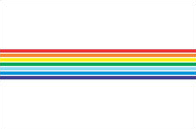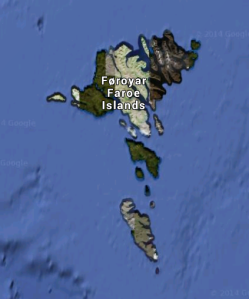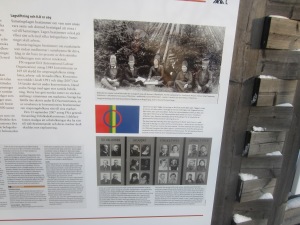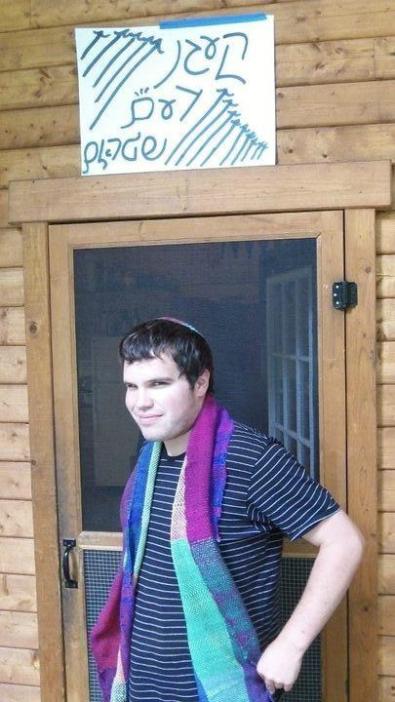I hereby take the time to reflect on where I am in my various language journeys, where I could improve, if I am falling back, and what plans I may have.
I will be as honest with myself as I can.
First off, I should begin with English, my native language, the one that you are probably reading this article in.

I actually have a significant problem with speaking English, more than I had expected (surprise, surprise!!!)
In no small part does this have to do with the fact that I had seen my American accent as something to “get rid of” and/or disguise (In my experience, Israelis and Swiss have “American radars” that are very difficult to fool, Germans are about average difficulty, Greeks above-average difficulty, Scandinavians below-average difficulty, and the easiest time I had disguising my accent was among Americans [no big surprise there]).
Not only that, I still pepper my English with some foreign expressions (mostly from German, Finnish or assorted Scandinavian, mostly Danish), and I have to force an American accent most of the time. I should have foreseen this outcome: I kept this side to me so actively bottled up that when I need it to fit in, it still won’t come out, even with effort!
That isn’t even to mention the fact that sometimes I speak English with the sentence structure of other languages, German being the worst offender and Greenlandic a close second .
(For those of you interested in what “speaking English with Greenlandic sentence structure is”, it is when I pause at various points in the sentence depending on when the words would break off…and Greenlandic words are very long indeed… An example: “there is my computer on the table” would be “on the table…my computer is there”. )
What I intend to do: immerse. Immerse, immerse, immerse. Do I really have to resume watching television in my native language? Has it really come this far? We’ll see…
Next up is Yiddish, the first non-English language that I genuinely felt I became good with…

Deitschmerish (the mixing of German and Yiddish) had become a bigger problem than I had anticipated. Mental discipline was enough for me to prevent myself from speaking Deitschmerish most of the time, but at the end of the day I may need to refresh some vocabulary, a process that is WAY long overdue…
The words of the holy tongue (loshn-koydesh) really dealt me the opportunity for my Yiddish to “hold its own”. Thanks also to German and being constantly cognizant of the differences between German and Yiddish (and Dutch figures into this somehow as well…), I was capable of “slacking off” without practicing and still being able to maintain most conversations. But I really shouldn’t be lazy…but it seems that I came to the right city to practice this language!
As to German, this is the one language I had struggled the most with, and I had difficulty having a conversation in German until about March/April 2014 (at that point I had been living in Germany for a year). Sometimes I also felt very self-conscious, not also to mention my nagging desire to love understudied languages more (gotta live with that…).
I had encountered SO much discouragement and so many roadblocks and reflections and bouts of self-conscious worrying to get to that point, but luckily I have had more than enough success stories with conversational German (during my last semester) for me to be confident now. And now is what counts the most.

Thanks largely to my “Deunglisch”, I may need to give spoken German a break for a while…but given how many written materials in German are in the library in which I am currently writing this blogpost, I think I can manage some other skill developments.
And now for Team Scandinavia, and I’ll try to be quick:

Swedish: Depending on who I am with, I can either speak Swedish very confidently or sometimes I’ll worry a lot. I think part of this comes from the “fear of being answered in English” that I had to put up with in Stockholm during my learning phases (my fear of being answered in English in Germany shrank to next to nothing, even when I was there only for a few weeks…)
In all of my languages, I am constantly building vocabulary (even with English, thanks largely to the bizarre Faroese vocabulary lists filled with culinary…um…intrigue?). Even better: when I look at a word in one of the Scandinavian Languages, I’ll compare it to the other two. This works wonders for my memory, interestingly.
The “sj” sound is more natural now than I ever thought that it would be, but I feel as though it will never be perfect (one time I got it down just right! The way a native speaker would!)
Television has worked wonders for me mastering the rhythm of the Swedish Language, I just imagine how certain characters would say the words that I’m thinking (with my musical muscle-memory) and then I duplicate that rhythm. This has never failed me.
What I should do: (1) keep on the journey and (2) realize that I worry too much and (3) stop worrying so much. I’m not a beginner struggling to order cinnamon buns anymore. That was nearly two years ago.
Danish: My Greenlandic and Faroese adventures have required me to bolster my ability to read Danish and it really shows when I can read a text out loud without flinching. The Stød is now very natural for me, but sometimes I’m still self-conscious about what many Danes might think of my accent (or sometimes even the fact that I chose to learn the language, or that I have this thing for the Danish colonies).
Encountering a group of Danes in the NYC subway system the other day, it occurred to me that, in comparison to many languages, Danish, as spoken by native speakers, isn’t spoken very quickly.
I have two primary goals with Danish: (1) learn slang better (as I may need them to learn Greenlandic and Faroese slang) and (2) stop worrying so much about what native speakers might think if I open my mouth. Come to think of it, I haven’t received discouragement for learning either Danish or Norwegian. From anyone.
Norwegian: Now that I look back over the past year, it is clear that I have spent the smallest amount of time with Norwegian.
Not surprisingly, I can read Norwegian articles very well (thanks to the whole Danish/Norwegian being very similar). I feel a lot more confident with my accent in Norwegian than I am with either of the other two Scandinavian Languages in question, and I’ve fooled many a non-Norwegian into thinking that I was from the country when I let loose a few words.
I really try not to play favorites with my projects, but I still find that Norwegian is the most beautiful language in my collection and I should use that as a motivation to maintain it.
After all, I really find that I have the least anxiety about Norwegian, but I really wish that I could speak it more often with real people. But hey, I’m in New York right?
And last but not least among my conversational languages…

I had pumped so many hours into Finnish and I’m proud of it. I’m a far cry from being seen as a Native speaker with higher education, but I’m okay with having a good command of the casual language. From my time in Finland (back in November 2013 when I felt that I really didn’t know it that well), it seems that Finns are readily impressed by genuine foreigner attempts to learn their language (when I write “their language”, I am also being cognizant of the Fennoswedes).
But thanks largely to Finnish being very far from English, I don’t get lots of vocabulary “for free” the way I do with the Germanic or the Romance Languages. I have to maintain the language with extra effort. If that means watching more TV in Finnish than devoting it to other ones, then so be it.
Right now I’d really like to use Finnish to strengthen Estonian and Northern Sami. It would also be interesting for the day in which I take Hungarian very seriously.
My biggest weakness with Finnish? I sometimes struggle with the written language. More than I should. Wikipedia obviously isn’t a problem in this regard, but some other written material is, including, surprisingly, internet comments…
Next time I will write about the almost-conversational languages in part 2!











